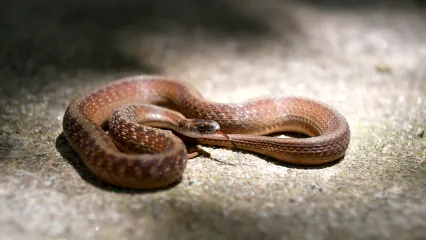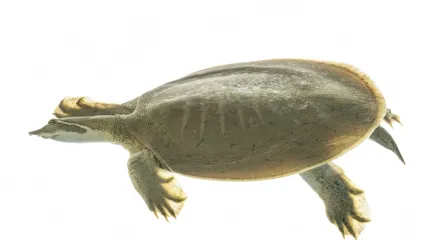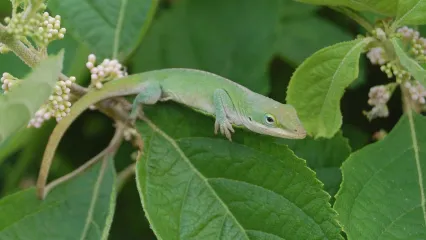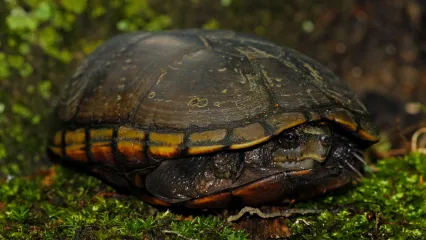
Description
These relatively small snakes vary considerably in dorsal coloration. However, they always have a pattern of some sort; they are never uniformly colored like flat-headed snakes. The dorsal coloration varies from gray to reddish-brown. The dorsal pattern usually consists of a series of dark irregular spots extending down the dorsolateral surfaces with an irregular light-colored mid-dorsal stripe. The mid-dorsal stripes extend from behind the head to the tip of the tail. At least two distinct dark markings lie between the eye and jaw with a third dark mark at the back of the jaw. The belly is light-colored, typically cream to white. Scales are distinctly keeled and the anal plate is divided. The only snakes with which these can be confused are juvenile orange-striped ribbonsnakes or Texas gartersnakes. Brownsnakes can be easily distinguished by carefully examining the mid-dorsal stripes. The stripe is irregular, often interrupted by narrow dark crossbars in Dekay's brownsnakes whereas it is not interrupted and usually orange or yellow in juvenile Texas gartersnakes and orange-striped ribbonsnakes.
Size
The typical size of Dekay's brownsnakes varies from 9-13 inches, but females can reach as much as 18 inches in total length. These snakes are stouter in body shape than similar-length flat-headed snakes or juvenile Texas gartersnakes and orange-striped ribbonsnakes.
Habitat
The Dekay's brownsnake can be found throughout most of Oklahoma, with the exception of the panhandle and the southwestern corner of the state. In much of the state, it is called the Dekay's brownsnake, whereas in some parts of eastern Oklahoma it is called the brownsnake or midland brownsnake. In North America, subspecies of the brownsnake complex extend west to east from central-west Texas through the entire eastern United States and from north to south from Canada to the tip of Florida and into Mexico.
Life Cycle
Dekay's brownsnakes are active from late winter to late fall as long as daytime temperatures are favorable. During spring and fall, they are likely active throughout the day, but summer activity appears restricted to dusk. However, because these snakes are highly secretive, they may be active under surface objects, inside of rotted logs, or in crevices in the ground during summer. Mating most likely takes place in spring, but other subspecies have been observed mating in fall as well. Ten to 25 live young are born in late July or early August. Brownsnakes eat invertebrates, especially earthworms, insect larvae and slugs when available. These snakes are harmless to humans.
How To Observe
These snakes are most easily observed by turning logs, boards, rocks and other surface items early in spring. They can be common in junkyards or around buildings. During summer, they can be found early in the morning or at dusk on roads and occasionally trails. Because they are small and cryptic, they are difficult to see.
(This profile was created by Dr. Laurie Vitt as part of a partnership between the Wildlife Department and the Sam Noble Oklahoma Museum of Natural History. It was funded as part of a larger State Wildlife Grant to survey and inventory amphibians and reptiles of the Wildlife Management Areas of Oklahoma: T-35-P-1.)


